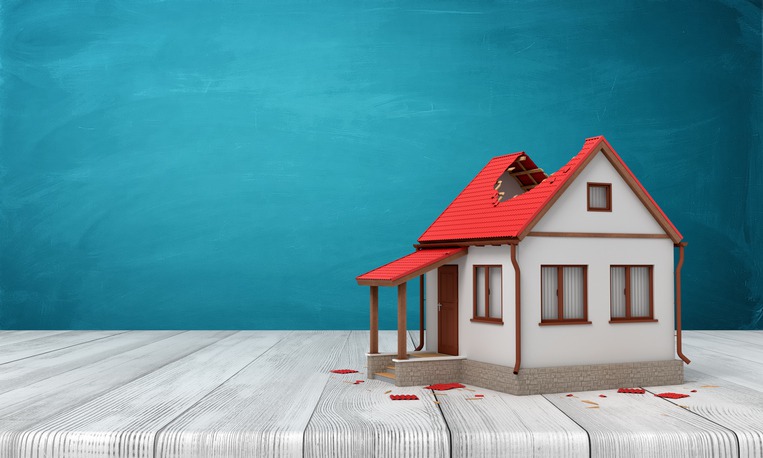Property damage is costly and stressful. Whether you own a home or manage a business space, safeguarding your property from potential damage saves you money and stress. Here are practical methods to keep your property secure and in optimal condition.
Are There Ways You Can Avoid Future Damage to Your Property?
Regular Maintenance Checks
Regular maintenance inspections identify potential problems before they grow into serious issues. Schedule routine evaluations for plumbing, electrical systems, and structure assessments. Observing early signs saves costs and prevents extensive repairs.
Creating a maintenance checklist helps track necessary tasks. Keep a calendar reminder for essential inspections, such as roofing checks, water heater maintenance, and HVAC servicing.
Check for leaks regularly.
Inspect roofing and gutters quarterly.
Maintain HVAC systems annually.
Keep drains cleared consistently.
Water Damage Prevention
Water leaks can cause severe property damage quickly. Install leak detection devices or smart sensors that alert you when leaks begin. These devices help avoid extensive water damage by notifying you promptly to address issues.
Investing in sump pumps and waterproofing basements or lower levels protects your premises from flooding issues. Additionally, maintaining your pipes properly and installing insulation around them prevents burst pipes in colder temperatures.
Fire Risk Reduction Techniques
Fire causes devastating effects on property. Installing smoke alarms and fire extinguishers in accessible locations significantly reduces fire-related losses. Regularly testing and replacing batteries in smoke alarms ensures optimal function during emergencies.
Taking preventative measures to reduce fire hazards includes covering exposed wires, properly storing flammable materials such as gas cans, and regularly inspecting your electrical outlets. These simple precautions substantially reduce fire possibility and protect your property effectively.
Effective Landscaping Ideas
Proper landscaping plays a significant part in protecting your property. Trimming branches regularly and avoiding vegetation overgrowth prevents damage from falling trees or branches during storms. Keeping branches adequately trimmed enhances property safety.
Design your landscape to facilitate efficient drainage. Proper grading around your property directs water away and significantly reduces flooding risks. Moreover, planting vegetation strategically helps soak up excess water and minimizes water accumulation near foundations.
Maintain adequate drainage channels.
Trim and prune trees regularly.
Plant vegetation wisely around your property.
Protecting Against Storm Damage
Storms frequently cause damage to properties, especially strong winds and hailstorms. Installing storm shutters or impact-resistant windows minimizes potential hazards during severe weather events. Securing heavy outdoor furniture prevents it from causing significant external destruction during strong gusts.
Inspect your roof carefully before storm seasons start. Replacing worn or damaged shingles immediately ensures your roof remains robust and leak-free during harsh conditions. Effective storm management planning keeps your structures safe and reduces the overall impact of storm episodes on property.
Implementing Security Measures
Security cameras and alarms deter vandalism or burglary attempts. A robust security system discourages criminals from attempting illegal entry. Ensure your security equipment undergoes regular testing to guarantee proper functionality during emergencies.
Enhanced security includes sufficient external lighting that illuminates dim areas around your premises. Smart lighting systems activated upon detecting motion effectively keep intruders away. Keeping fences sturdy and locks functional provides additional layers of defense for protecting your property.
Mold Protection and Moisture Control
Mold accumulation is harmful to structures and residents’ health because it thrives in damp conditions. One solution for handling mold infestations involves reliable mold removal services Clairemont. This type of service thoroughly removes mold and addresses underlying causes, ensuring your property remains mold-free and healthy for inhabitants.
Scheduling regular assessments for potential moisture build-up significantly reduces mold growth. Ensuring areas prone to dampness, such as bathrooms, kitchens, and laundry rooms, and maintaining proper ventilation further prevents mold occurrences. Investing in dehumidifiers also provides additional support in regulating indoor humidity levels.
Investing in Insurance Coverage
Adequate insurance coverage presents essential protection against unavoidable damages. Choose comprehensive protection for various events, including floods, fire, or natural disasters. Carefully read policy conditions thoroughly, ensuring all important property aspects receive full coverage during unexpected emergencies.
Conducting an annual insurance review effectively reflects your property’s current condition and value. Update your coverage accordingly to guarantee maximum protection. Staying informed about insurance updates ensures a quick response and adequate financial support when restoration or repair becomes necessary.
Addressing Issues Promptly
Quick actions mitigate property damage. Addressing minor issues immediately prevents them from developing into bigger problems. Promptly repairing leaking taps or clogged gutters prevents severe water damage in later stages.
Taking prompt action after discovering damage maintains your property’s structural integrity. Professional companies specialized in damage restoration Clairemont efficiently restore your premises from disaster-related harm. Such services facilitate timely repairs and expert guidance.
Educating Occupants and Staff
Awareness among occupants effectively reduces accidental property damage. Educate family members, tenants, or employees regarding preventive measures, safety protocols, and the correct use of appliances or equipment. Knowledge empowers individuals to become proactive in safeguarding property from harm.
Regular training sessions ensure continuous awareness. Provide guidelines clearly outlining responsibilities. Displaying informative signs assist occupants or employees to act responsibly and take safety seriously around properties.
Developing an Emergency Plan
Creating a thorough emergency plan reduces confusion during unexpected events like floods, fires, or severe weather episodes. An efficient plan includes accessible emergency contacts, clearly outlined evacuation routes, shelter locations, and essential storage sites for necessary supplies and documentation.
Regularly reviewing emergency plans familiarizes occupants and staff, preparing them effectively for quick actions during critical conditions. Clearly communicating roles and responsibilities confirms smooth execution whenever necessary. Emergency preparedness minimizes property loss significantly when implemented effectively.
List emergency contacts clearly.
Outline immediate action steps during emergencies.
Schedule periodic drills and training.
Final Thoughts
Preventing property damage requires proactive measures, awareness, and scheduled efforts. Through routine inspections, preventive maintenance, investment in technology, adequate insurance coverage, and consistent education, you significantly reduce damage chances. Your actions maintain your property’s integrity, provide safety, and contribute to peace of mind.
